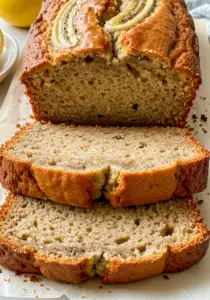Flaky, buttery, golden croissants made from scratch? Yes, please! This Homemade Croissants Step-by-Step guide will walk you through every detail so you can recreate authentic French bakery-style croissants right in your own kitchen. While the process takes time, each step is simple and totally worth the result: layers upon layers of delicate pastry perfection.
Want recipes like this delivered straight to your inbox? Subscribe now to get the latest culinary creations you’ll love.
Why You’ll Love This Recipe
Bakery-Style at Home – Impress friends and family with real French-style croissants.
Detailed Instructions – Each step is clearly explained for foolproof success.
Make-Ahead Friendly – The dough can be prepped a day before baking.
Versatile – Enjoy them plain or fill with chocolate, almond paste, or jam.
Satisfyingly Homemade – The crisp exterior and soft interior are unbeatable!
Ingredients You’ll Need
For the Dough (Detrempe):
4 cups all-purpose flour (plus more for dusting)
⅓ cup granulated sugar
2¼ tsp active dry yeast (1 standard packet)
1½ tsp salt
1¼ cups warm milk (110°F)
2 tbsp unsalted butter, softened
For the Butter Layer (Beurrage):
1 cup (2 sticks) unsalted butter, cold but pliable
2 tbsp all-purpose flour (to coat butter block)
For Finishing:
1 egg (for egg wash)
1 tbsp milk or water (to mix with egg)
Tools You’ll Need
Large mixing bowl
Rolling pin
Plastic wrap
Baking sheet
Parchment paper
Pastry brush
Sharp knife or pizza cutter
Stand mixer with dough hook (optional but helpful)
Ruler (optional, for precise measuring)
Step-by-Step Instructions
Step 1: Make the Dough (Detrempe)
In a small bowl, dissolve the yeast in warm milk and let sit for 5–10 minutes until foamy.
In a large bowl or stand mixer, combine flour, sugar, and salt.
Add the softened butter and mix until crumbly.
Pour in the yeast-milk mixture and knead until a smooth dough forms, about 5–6 minutes.
Shape into a rectangle, wrap in plastic, and refrigerate for at least 1 hour.
Step 2: Prepare the Butter Block (Beurrage)
Place cold butter between two sheets of parchment paper.
Use a rolling pin to pound and shape the butter into an even 6×6-inch square.
Lightly dust with flour to prevent sticking.
Chill the butter in the fridge until firm but pliable (not rock hard).
Step 3: Enclose the Butter
On a lightly floured surface, roll out the chilled dough into a 10×10-inch square.
Place the butter block in the center on a diagonal so it looks like a diamond.
Fold the corners of the dough over the butter, meeting in the center like an envelope.
Pinch the edges to seal the butter inside completely.
Step 4: First Fold (Single Turn)
Roll the dough into a long rectangle, about 8×24 inches.
Fold the top third down, then the bottom third up over it (like a letter).
Rotate the dough 90 degrees, wrap in plastic, and refrigerate for 30–45 minutes.
Step 5: Second & Third Folds
Repeat the rolling and folding process two more times.
Be gentle to avoid breaking the dough and exposing the butter.
Always chill for 30–45 minutes between folds to maintain distinct layers.
Step 6: Final Roll & Shape
After the last fold and rest, roll the dough into a large rectangle, about 10×20 inches and ¼-inch thick.
Use a knife or pizza cutter to trim the edges for clean lines.
Cut into long triangles (about 5 inches wide at the base, 8 inches tall).
Make a small slit at the base of each triangle and roll tightly toward the tip to form a crescent shape.
Place on a parchment-lined baking sheet, tip side down.
Step 7: Proof the Croissants
Cover loosely with plastic wrap or a clean towel.
Let rise at room temperature for 1.5 to 2 hours, or until noticeably puffy and jiggly (not doubled in size).
If your kitchen is cool, place them in a turned-off oven with a bowl of warm water to create a warm proofing environment.
Step 8: Apply Egg Wash
Preheat your oven to 400°F (200°C).
Beat the egg with 1 tbsp of milk or water.
Brush each croissant gently with egg wash, making sure not to deflate them.
Step 9: Bake
Bake for 18–22 minutes until golden brown, crisp, and flaky.
Rotate the tray halfway through baking for even browning.
Let cool slightly before serving.
Tips for Perfect Croissants
Keep Everything Cold – Chilled dough and butter are essential for creating layers.
Don’t Overwork – Be gentle when folding to avoid melting the butter.
Rest Between Steps – Refrigeration after each fold helps lock in the layers.
Use High-Quality Butter – Better butter equals richer, more flavorful croissants.
Practice Patience – Croissants take time, but the results are worth every minute.
Filling Ideas
Chocolate – Add chocolate batons or chips before rolling for pain au chocolat.
Almond – Spread almond paste and top with sliced almonds before baking.
Ham & Cheese – Add slices of beef and cheese for a savory breakfast version.
Fruit Jam – A spoonful of jam adds a sweet surprise in every bite.
Serving Suggestions
Fresh with Coffee – Nothing beats a fresh croissant with a hot cup of coffee.
Breakfast Sandwich – Slice and stuff with scrambled eggs and veggies.
With Butter & Jam – Classic, simple, and always satisfying.
French Toast Style – Use day-old croissants to make indulgent French toast.
How to Store & Reheat
Storing:
Room Temperature: Store in an airtight container for up to 2 days.
Refrigerate: Not recommended—moisture can affect the texture.
Freeze: Wrap tightly and freeze for up to 2 months. Thaw at room temp before reheating.
Reheating:
Oven: Warm in a 300°F (150°C) oven for 5–8 minutes for fresh-out-the-oven texture.
Avoid microwaving – It makes them rubbery and soggy.
Frequently Asked Questions
- Can I make the dough ahead of time?
Yes! You can refrigerate the dough overnight after the first fold or after shaping. - Can I skip the folds?
No—folding is what creates the layers. Skipping this step means no flakiness. - Why didn’t my croissants puff up?
They may not have proofed long enough, or the butter may have melted during folding. - Can I use whole wheat flour?
You can substitute up to 25% with whole wheat, but expect a denser texture. - Do I need a stand mixer?
It helps but isn’t required. You can knead the dough by hand—it just takes a little more time.
Final Thoughts
Homemade croissants may take a bit of time, but each buttery, flaky bite makes the effort completely worth it. Once you taste these golden beauties fresh from your oven, store-bought will never compare. Whether you keep them classic or fill them with your favorite flavors, making croissants from scratch is one of the most satisfying baking adventures you can take.
Try them out and let me know how your batch turns out! Don’t forget to share your photos and leave a comment below. Happy baking!
Preparation Time: 2 hours (plus chilling and proofing time)
Cooking Time: 20 minutes
Cuisine: French
Nutritional Information (Per Serving):
Calories: 290 | Protein: 6g | Carbohydrates: 28g | Fat: 17g | Fiber: 1g | Sodium: 280mg

Homemade Croissants Step-by-Step
- Total Time: 2 hours 20 minutes
Description
Flaky, buttery, golden croissants made from scratch? Yes, please! This Homemade Croissants Step-by-Step guide will walk you through every detail so you can recreate authentic French bakery-style croissants right in your own kitchen. While the process takes time, each step is simple and totally worth the result: layers upon layers of delicate pastry perfection.
Want recipes like this delivered straight to your inbox? Subscribe now to get the latest culinary creations you’ll love.
Ingredients
For the Dough (Detrempe):
4 cups all-purpose flour (plus more for dusting)
⅓ cup granulated sugar
2¼ tsp active dry yeast (1 standard packet)
1½ tsp salt
1¼ cups warm milk (110°F)
2 tbsp unsalted butter, softened
For the Butter Layer (Beurrage):
1 cup (2 sticks) unsalted butter, cold but pliable
2 tbsp all-purpose flour (to coat butter block)
For Finishing:
1 egg (for egg wash)
1 tbsp milk or water (to mix with egg)
Instructions
Step 1: Make the Dough (Detrempe)
In a small bowl, dissolve the yeast in warm milk and let sit for 5–10 minutes until foamy.
In a large bowl or stand mixer, combine flour, sugar, and salt.
Add the softened butter and mix until crumbly.
Pour in the yeast-milk mixture and knead until a smooth dough forms, about 5–6 minutes.
Shape into a rectangle, wrap in plastic, and refrigerate for at least 1 hour.
Step 2: Prepare the Butter Block (Beurrage)
Place cold butter between two sheets of parchment paper.
Use a rolling pin to pound and shape the butter into an even 6×6-inch square.
Lightly dust with flour to prevent sticking.
Chill the butter in the fridge until firm but pliable (not rock hard).
Step 3: Enclose the Butter
On a lightly floured surface, roll out the chilled dough into a 10×10-inch square.
Place the butter block in the center on a diagonal so it looks like a diamond.
Fold the corners of the dough over the butter, meeting in the center like an envelope.
Pinch the edges to seal the butter inside completely.
Step 4: First Fold (Single Turn)
Roll the dough into a long rectangle, about 8×24 inches.
Fold the top third down, then the bottom third up over it (like a letter).
Rotate the dough 90 degrees, wrap in plastic, and refrigerate for 30–45 minutes.
Step 5: Second & Third Folds
Repeat the rolling and folding process two more times.
Be gentle to avoid breaking the dough and exposing the butter.
Always chill for 30–45 minutes between folds to maintain distinct layers.
Step 6: Final Roll & Shape
After the last fold and rest, roll the dough into a large rectangle, about 10×20 inches and ¼-inch thick.
Use a knife or pizza cutter to trim the edges for clean lines.
Cut into long triangles (about 5 inches wide at the base, 8 inches tall).
Make a small slit at the base of each triangle and roll tightly toward the tip to form a crescent shape.
Place on a parchment-lined baking sheet, tip side down.
Step 7: Proof the Croissants
Cover loosely with plastic wrap or a clean towel.
Let rise at room temperature for 1.5 to 2 hours, or until noticeably puffy and jiggly (not doubled in size).
If your kitchen is cool, place them in a turned-off oven with a bowl of warm water to create a warm proofing environment.
Step 8: Apply Egg Wash
Preheat your oven to 400°F (200°C).
Beat the egg with 1 tbsp of milk or water.
Brush each croissant gently with egg wash, making sure not to deflate them.
Step 9: Bake
Bake for 18–22 minutes until golden brown, crisp, and flaky.
Rotate the tray halfway through baking for even browning.
Let cool slightly before serving.
Notes
Keep Everything Cold – Chilled dough and butter are essential for creating layers.
Don’t Overwork – Be gentle when folding to avoid melting the butter.
Rest Between Steps – Refrigeration after each fold helps lock in the layers.
Use High-Quality Butter – Better butter equals richer, more flavorful croissants.
Practice Patience – Croissants take time, but the results are worth every minute.
- Prep Time: 2 hours (plus chilling and proofing time)
- Cook Time: 20 minutes
- Cuisine: French



